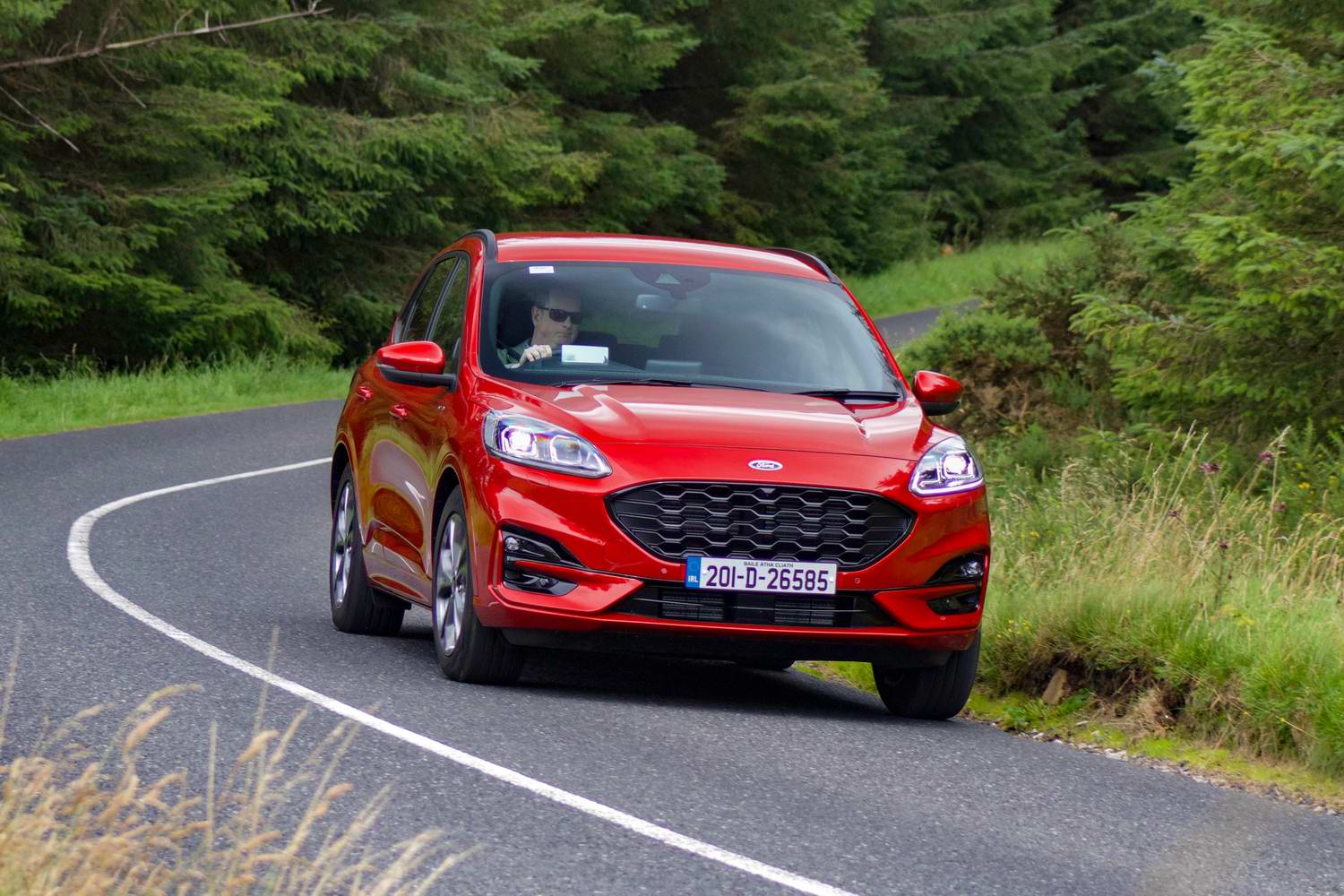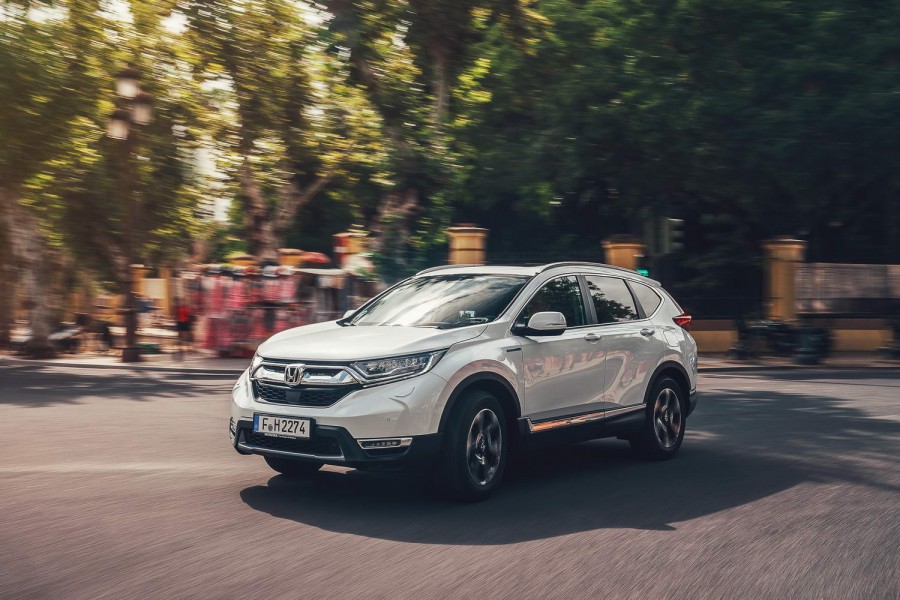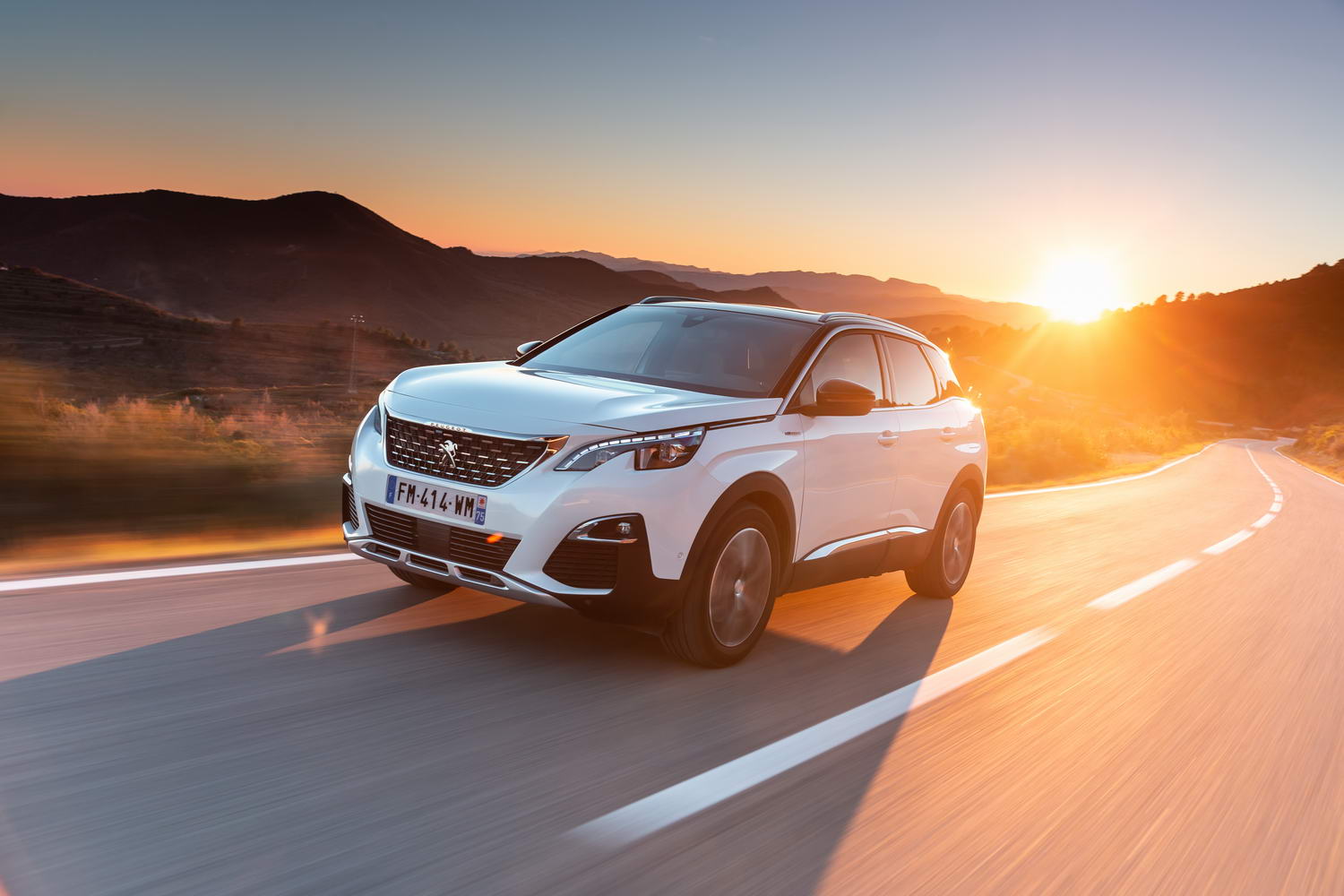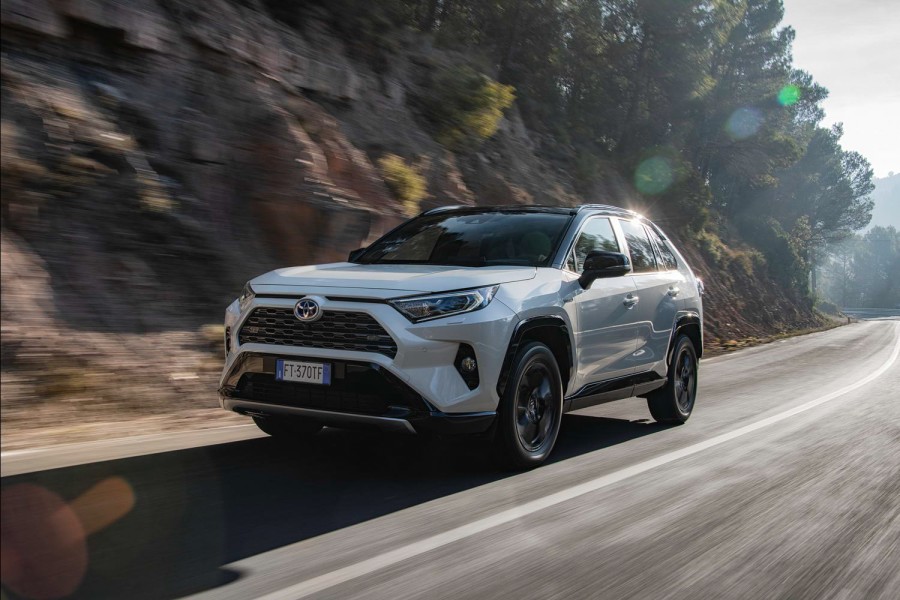With the likes of Toyota's RAV4, the Hyundai Tucson and the Honda CR-V to take on, Ford's new Kuga had to be good. We put it through its paces on Irish roads.
In the metal
The previous two generations of Kuga have tended towards blandness, but for this third-gen, Ford has pushed the styling boat out a little. The new Kuga doesn't stray too far from the Focus-Puma styling axis, but it's chunkily handsome, especially in the ST-Line spec of our test car, with the bright Lucid Red paintwork. Other specs and colours can look a touch dowdier, but we reckon there are faint overtones of Aston Martin's DBX SUV about the new Kuga, and that's no bad thing.
Inside, things are rather more familiar. In fact, the cabin is basically that of the Focus, but taller. That is a mixed blessing, in that there's a nice simple layout and comfort is high on the agenda. It does also mean that there are a few too many cheap plastics on show, but the better news is that the underlying quality, the way everything is assembled, feels very tight and impressive. The Kuga gets the new 12-inch digital instrument screen from the Puma, which is bright and clear, and which alters its layout depending upon whether you're in Normal, Eco, Sport, or Slippery modes. The Kuga, being something of a pretend off-roader, also has a Sand/Deep Snow mode.
The rest of the cabin gives you exactly what you need - plenty of space (head- and legroom in the back are both good) - and a decent boot (475 litres as standard, but that expands to more than 500 litres if you slide the back seats forward a bit).
Under the bonnet is possibly the new Kuga's most important feature - its plug-in hybrid powertrain. This is based around a new 2.5-litre Atkinson Cycle petrol engine, backed up by an electric motor and a 14.4kWh battery pack. Total system power is 225hp, but Ford doesn't break-down the individual outputs of the petrol engine and the electric motor, and nor does it give us a total system torque output. The engine develops 200Nm of torque by itself, and we reckon that the electric motor is adding at least another 150Nm to the mix, judging by the performance.
Charge the battery - which takes around three hours from a wall-mounted 7.4kW home charger - and you can drive for as much as 56km on just electric power, according to Ford's claim. Actually, you might do rather better than that. Some colleagues have seen better than 60km on a full battery. We managed to get 40-45km out of it, but the thing is that, depending on how and where you're driving, you can get the Kuga PHEV (Plug-in Hybrid Electric Vehicle) to go for a lot further on electric power than you think. A case in point was one journey from the top of Sally Gap to an address on the canal in Dublin. We left with the battery showing an indicated 11km left. By the time we completed our journey (admittedly, much of it downhill), we'd covered some 15km, all on electric power, and that included a 100km/h burst between three motorway junctions.
Driving it
It's this flexibility that forms the core of the Kuga's driving experience. As with most hybrids and plug-in hybrids, you often find yourself driving in the most economical manner possible, trying to get it to switch over to electric-only running as much as you can. That's a challenge, and often an enjoyable one, in itself, but the Kuga is thankfully one of those plug-ins that doesn't disgrace itself when the battery really is flat and you have a long motorway journey ahead.
In fact, that perfectly describes our first day with the car - collecting it with a full tank and an empty battery and heading straight out on a long motorway haul from Dublin to Kilkenny, and then back up to Belfast. Having completed all of that journey, with no charge in the battery, we got home with the dash showing indicated fuel consumption figure of 6.3 litres per 100km. Not bad, and about what you'd expect if you'd been driving a conventional diesel model. And of course a conventional diesel car wouldn't give you the smug pleasure of whizzing in saintly silence around town on battery power.
Of course, the Kuga isn't a one-trick pony. It's actually a very pleasant all-rounder to drive. As with any modern Ford product, steering feel has been somewhat sacrificed on the altar of electric power assistance, but the weighting and accuracy are particularly good. So too is the chassis balance and, in spite of the extra weight of the battery and motor, the Kuga rides with well-damped comfort (although the suspension can occasionally be a little noisy in its reactions). Actually, the only downside is that weight, which causes a little more body lean and understeer than is ideal. You can get the Kuga to press on with impressive commitment on a twisting road, but you're never unaware of the extra heft.
Oh, and one major piece of kudos to send Ford's way - physical cockpit controls. The Kuga's SYNC3 infotainment screen might, at eight inches, look a touch small compared to some of the competition, but praise is due for retaining proper switches and rotary controls for such things as audio volume and tuning, heating and air conditioning. They may not speak of digital slickness, but they're a heck of a lot easier and safer to use when driving than lumping controls onto the touchscreen.
What you get for your money
Although a little more expensive in its basic, diesel, form than the likes of a (slightly smaller) Nissan Qashqai or Hyundai Tucson, the Kuga does offer really quite impressive value for money, especially in plug-in hybrid form. Ignore the as-tested €44k price tag of our test car, and instead concentrate on the list price of €39,762 for the ST-Line X model. That version pitches the Kuga roughly half-way between the cheapest prices for a Toyota RAV4 Hybrid and a Honda CR-V Hybrid, but importantly, neither of those are plug-in hybrid models. So the Kuga, for more or less the same money, offers much greater potential flexibility, and longer stretches of zero-emissions running. Standard equipment in this spec includes LED headlights, 18-inch alloy wheels, the ST-Line body kit, seats with a mix of leather and 'Sensico' (Ford's answer to Alcantara fake suede) and a Bang & Olufsen stereo.
Summary
The Kuga very definitely continues Ford's recent hot streak that started last year with the Mustang Bullitt and Ranger Raptor, and which has continued this year with the Focus ST and new Puma. The Kuga PHEV is perhaps not as out-and-out impressive as the Puma (nor quite so much fun to drive), but it hits its marks with elan, is very well priced and a serious rival to the big-selling Toyota RAV4.

































